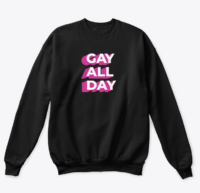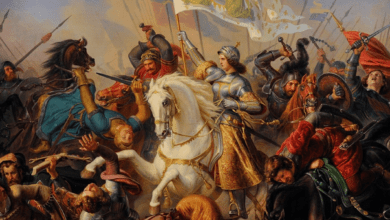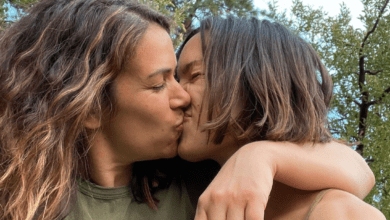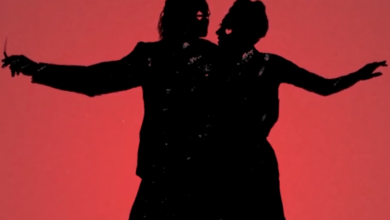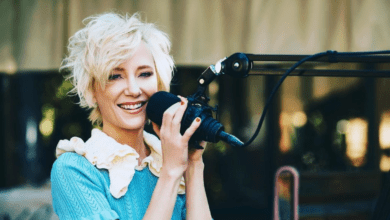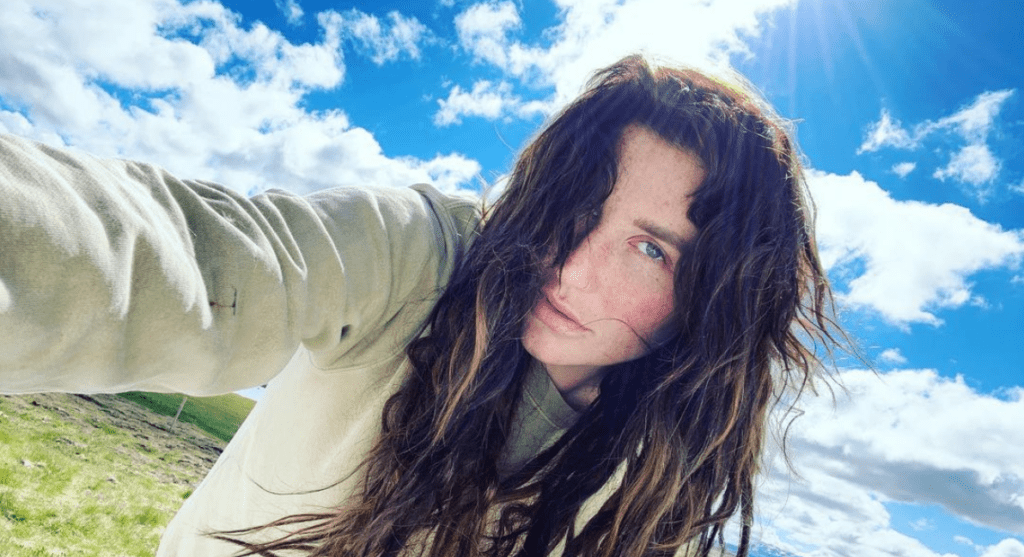
Pride month is a good excuse to come out and many celebrities take up the opportunity. Some are even threatened with being outed, unless they provide an exclusive interview with a major newspaper. Nothing says “Pride” like stealing somebody’s chance to come out on their own time. Coming out during Pride isn’t rare, but coming out with a specific sexual orientation seems to be. It’s cool to be vague, especially when it comes to bisexuality.
Increasingly, if somebody is into both men and women–the definition of bisexual–they’re more likely to avoid labels, or adopt the all-inclusive “queer.” Look, I’m not expecting every woman who realises they’re into women to know whether they’re bisexual or lesbian straight away. And sure, it’s none of my business. But if we’re going to take bisexual erasure seriously, then perhaps we should start with the obvious: why don’t people who are attracted to both men and women refer to themselves as bisexual?
Kesha, for example, celebrated Pride month by reminding us that she’s bisexual, except she didn’t use the word:
“🌈Happy pride! 🌈,” Kesha wrote on Instagram. “In case I haven’t been straight forward enough (LOL) I just wanted to take a sec to tell everyone that you are not only enough, just as you are, but the world is so fucking lucky to have you. I’m not gay. I’m not straight. I don’t know what I am.”
“I love people,” she continued. “I love people because we are all our own little consciousness journeys, dancing around the sun ☀️ how weird and interesting and fun this life is, right? I refuse to be anything, really, except for open to it all 🌟I know it can be confusing sometimes, but you are so seen and loved. Love u animals, happy pride 🌈!!!!! Also yes, I’ve been wearing the same thing for like 4 days. What? #happypride #pridemonth #pride.”
While some websites considered this “coming out,” Kesha has been open about her attraction to men and women for years.
I love Kesha. This isn’t a dig. But the best way to combat bisexual erasure is for people attracted to both men and women to use the correct word to describe themselves. Not identifying as a lesbian when with a woman. Not omitting bisexuality when with a man. Not choosing politically safe ambiguity. Not using sexual orientation as a chance to flag politics with “queer,” either, which is also ambiguous because it could mean any letter of the LGBT+ acronym.
“Labels are for soup cans” or “sexuality is fluid” are popular lines of homophobic thinking, and they partly inform the rejection of using “bisexual.” For you to think sexual orientation is fluid, you would have to be attracted to both men and women. The “fluidity” in bisexuality is that their attraction to men and women isn’t always 50/50. A bisexual person can feel mostly attracted to one sex and less to the other, but they’re still bisexual. Any homosexual or heterosexual person knows they’re not “fluid,” knows they’re only attracted to one sex. Even if, for homosexuals, it is realized after unenthusiastic sex and relationships that were a result of heteronormative pressure.
This isn’t Kesha’s fault, her Instagram post is just symptomatic of a broader issue — choosing the ambiguity of a rainbow flag over saying “bisexual.” The casual reminder that she’s into both men and women without using the word “bisexual” is an example of real bisexual erasure. These days, it’s not cool to be “bisexual,” just like it’s not cool to be “lesbian,” because it doesn’t automatically flag a subscription to queer politics. “Queer” and “pansexual” are trendy because they do subscribe to that politic. Posting a rainbow flag on social media and leaving your sexual orientation up to the audience’s imagination is safe, and it’s observably the most popular option for celebrities coming out today.
Bisexuality already encapsulates the definitions of queer and pansexual, but it’s way more groovy to flag your politics along with your sexual orientation today. Pansexuality is the queer theory version of bisexuality: continuing to refer to yourself as “bisexual,” when “pan” and/or “queer” exist, makes you politically questionable to the queer movement. You open yourself up to the suspicion that you’re one of those (evil) lesbian or bi women who would not have sex with a transwoman — or worse, you may not believe transwomen ARE women. Woman-loving celebrities rarely come out with the word “bisexual” or “lesbian,” despite their sexual orientation automatically falling under one or the other, because they are aware of the political significance of whatever label they “choose.”
What shouldn’t be that deep for women – into men and women? Bisexual. Only into women? Lesbian – also becomes a stressful crisis due to the multitude of micro-identities. Don’t even get me started on the Split Attraction Model. There are endless romantic and sexual preferences, but they have nothing to do with sexual orientation – which is what sex(es) we’re attracted to. Instead of having a list of ‘turn ons’ and ‘turn offs’ that are unique to all individuals – regardless of their sexual orientation – they’re now micro-identities. We even have a label for only being attracted to someone after we build a bond up first, as if that’s its own sexual orientation and not the experience of many people from all sexual orientations.
The fact that I, a lesbian, would be accused of phobic bigotry against demisexuals by some people, because I acknowledge that it’s not special to require emotional closeness before forming an attraction, is precisely the problem. Homosexuals and bisexuals experience very real, systematic oppression for their sexual orientation. We are not bigots for calling out straight people who want to feel a little “queer” by identifying as one of these micro-sexualities. Because that’s what micro-sexualities do – they prevent same-sex attracted people from locating straight people as homophobia’s beneficiary, because they, I don’t know, don’t like to sleep around or something.
Another reason why people don’t say bisexual, they say “queer” instead, is because there’s confusion around the difference between gender identity and the science behind sexual orientation. Kasandra Brabaw, a lesbian, was confused about her queer friend not identifying as bisexual and asked why. “If she’s interested in more than just women, I thought, why not call herself bisexual?”
“I eventually got an answer,” she continued. “Queer made more sense for her, she said, because she’s attracted to all kinds of people, including cisgender men and women, trans folks, non-binary people, genderqueer people, and people of many other genders. “Bisexual” didn’t feel right because the prefix “bi” literally means two, and there are way more than just two genders.”
There are two sexes, though? Sexual orientation doesn’t refer to gender identity, or else bisexuality would be called “bigenderality.” The sex in bisexuality doesn’t refer to intercourse, either, it refers to biological sex. That’s why homosexuality doesn’t mean “same-fuck,” it means “same-sex.”
Bisexual people are attracted to both sexes, so have the capacity to be attracted to any adult of any gender identity. However, as we know, lesbians aren’t attracted to every woman, straight women aren’t attracted to every man, and bisexual people aren’t attracted to everybody they come in contact with. Because we all belong to one of two sexes, including the 0.5% of the population with “clinically identifiable sexual or reproductive variations” and trans people, bisexuality cancels out pansexuality, which is defined by Merriam Webster as “of, relating to, or characterized by sexual or romantic attraction that is not limited to people of a particular gender identity or sexual orientation.”
The difference between bisexuality and pansexuality is politics, and sexual orientation isn’t a parade of political beliefs. Sexual orientations exist outside of what we identify as and what we believe. A repressed lesbian living in a country where homosexuality is illegal is still a lesbian, even if she identifies as straight and marries a man for safety. Sexual orientation is not what we do or what we say, it’s who we are.
I know some people will read this and say “who are you to tell people how to identify?” and that misses the point. I really don’t care if bisexual people want to refer to themselves as queer or pan because, on a micro-level, it is their business. This article isn’t about individual choice. It’s about the dangers in the movement to erase labels for sexual orientation while creating a million new micro-sexualities. It disregards the people who need a word for their sexual orientation the most.
Advocating against sexual orientation labels and creating a million more micro-sexualities both do the same thing: they obscure who we are. They erase the opportunity for class consciousness among marginalised sexual orientations. They destroy the specific communities, whether that be gay, lesbian, or bisexual, waiting to nurture people who belong. Without a word, how do you find your people? Perhaps such dilution of language affects gay men and lesbians the most, because queer already connotes sexual fluidity. But bisexual people aren’t a political monolith either and “queer” is a political movement more than it is a sexual orientation.
Celebrities are arguably the biggest influencers of mainstream culture. It’s their business if they stay in the closet. I don’t believe in pushing anybody out. But if they do come out, if they do claim pride, then I would love to see them be specific and transparent about which sexual orientation they represent. Because right now it feels like many celebrities are just popping their arm out of the closet, giving a quick thumbs up to surf the rainbow wave, and then shutting the door.
I have no problem with remaining private, but if you feel safe and able to come out then use your influence to represent your specific sexual orientation, rather than settling for a rainbow flag and a #loveislove hashtag. Say bisexual. Say lesbian. Say it.

